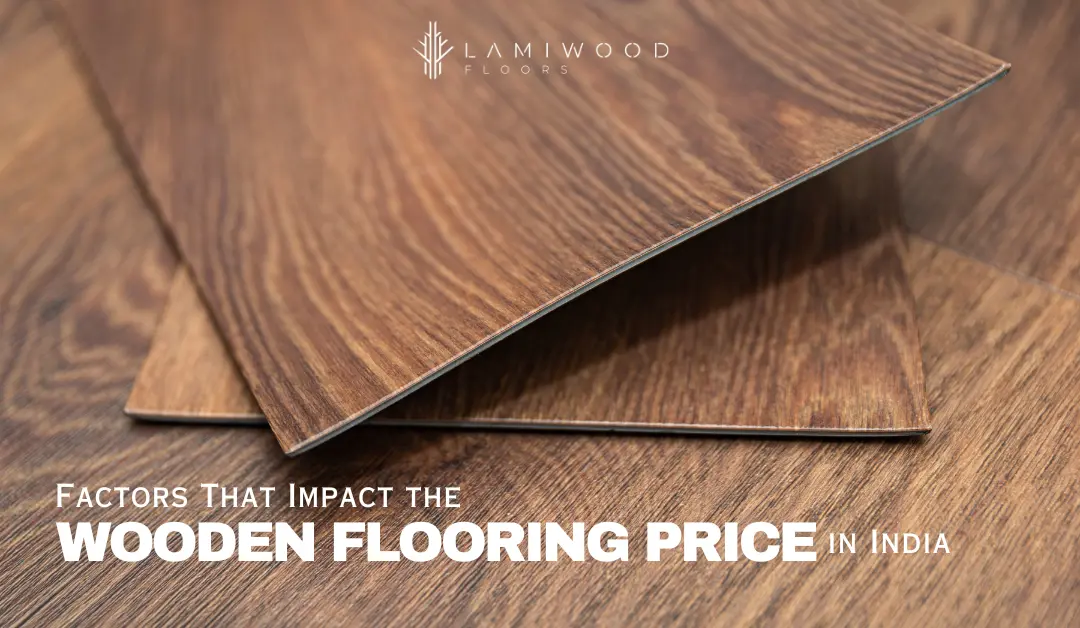Wooden flooring has gained immense popularity in India as a luxurious and aesthetically appealing option for both residential and commercial spaces. With its natural beauty, durability, and timeless appeal, wooden flooring adds elegance to any interior. However, when it comes to purchasing wooden flooring in India, several factors can impact the price. In this blog, we will explore the various factors that influence the cost of wooden flooring in India.
Wood Species and Quality
The type of wood used for the flooring is a significant determinant of its price. In India, different species of wood are used for flooring, such as oak, teak, maple, walnut, and bamboo. Exotic hardwoods tend to be more expensive compared to local varieties. The quality of the wood, including its grade, origin, and age, also affects the price. Higher-quality wood with fewer imperfections and better durability will typically have a higher price tag.
Installation Method
The installation method chosen for wooden flooring plays a crucial role in determining its cost. There are primarily two installation options: nail-down and floating. Nail-down installation involves nailing the individual planks to the subfloor, which requires more labor and time, thus adding to the overall cost. On the other hand, floating installation involves interlocking the planks without the need for nails, making it a more cost-effective option.
Size and Thickness of Planks
The size and thickness of the wooden planks used for flooring can impact the price. Wide and longer planks generally have a higher price than narrower and shorter ones. Thicker planks are considered more durable and stable, but they are also more expensive. The thickness of the wear layer, which is the topmost layer of the plank, is particularly important as it determines the floor’s longevity and the number of refinishing opportunities.
Finish and Surface Treatment
The finish and surface treatment applied to the wood flooring greatly influence its price. There are various types of finishes available, including lacquer, oil, and varnish. Each finish has its unique characteristics in terms of appearance, durability, and maintenance requirements. High-quality finishes tend to be more expensive but offer better protection against wear and tear, moisture, and stains.
Size of the area
The size of the area to be covered by the wooden flooring is also a significant factor in determining the price. Larger areas require more materials and labor, which will increase the overall cost of the project. Smaller areas may be more affordable, but the price per square foot may be higher because of the smaller volume of materials.
Geographic Location
The location of the project also affects the price of wood floors. Prices can vary depending on the city or region where the project is located. In general, prices are higher in metropolitan areas because of the higher cost of living and labor.
Labor cost
The cost of labor is another factor that impacts the price of wooden flooring. It depends on the installer’s experience and skill level whether labor costs will increase or decrease. Inexperienced installers may be less expensive, but they may also be more likely to make mistakes that can impact the overall quality of the installation.
Design and customization
The design and customization of the wooden flooring can also impact the price. Custom designs, patterns, and finishes will add to the overall cost of the project. However, these customizations can also add unique and personalized touches to the flooring that can enhance the overall aesthetic appeal of the space.
Maintenance and repair
The cost of maintenance and repair should also be considered when calculating the overall price of wooden flooring. Hardwoods generally require less maintenance and are less prone to damage than softwoods. However, all wooden flooring will require some level of maintenance over repair.
Installation Accessories
Apart from the wooden planks, several installation accessories contribute to the overall cost of wooden flooring. These accessories include underlayment, moisture barriers, adhesives, and transition strips. Underlayment helps in noise reduction and provides a cushioning effect, while moisture barriers protect the flooring from moisture-related damages. The choice and quality of these accessories can impact the price, as higher-quality materials may cost more but offer better performance and longevity.
Market Demand and Supply
Market demand and supply dynamics play a vital role in determining the price of wooden flooring in India. Factors such as the availability of raw materials, manufacturing capacity, import duties, and competition among suppliers can influence the price. Additionally, economic conditions, such as inflation and exchange rates, can also affect the cost of imported wooden flooring.
Final thoughts
Wooden flooring adds a touch of elegance and warmth to any space, but its price can vary significantly based on various factors. The type and quality of wood, installation method, plank size and thickness, finish and surface treatment, brand reputation, market dynamics, and additional costs all contribute to the overall price. It is crucial to consider these factors while planning for wooden flooring in order to make an informed decision. For more clarity, you can connect with Lamiwood’s team at +91 9999500117

